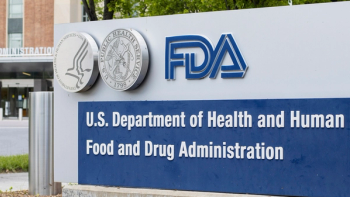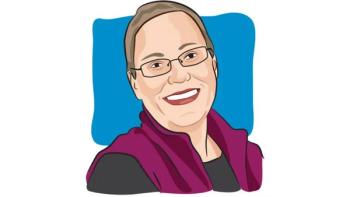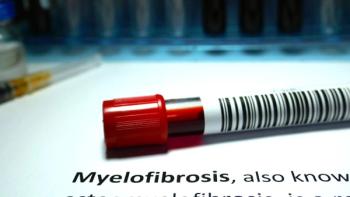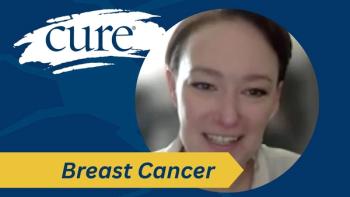
Patients With Newly Diagnosed, High-Risk Myeloma See High MRD Negative Rates With Isa-KRd
Treatment with the combination of Sarclisa, Kyprolis, Revlimid and Isa-KRd generated high rates of minimal residual disease negativity in patients with newly diagnosed, high-risk multiple myeloma, irrespective of transplant status.
Patients with newly diagnosed, high-risk multiple myeloma experienced high rates of minimal residual disease (MRD) negativity with treatment with the combination of Sarclisa (isatuximab-irfc), Kyprolis (carfilzomib), Revlimid (lenalidomide) and Isa-KRd (dexamethasone), irrespective of transplant status, according to data from an interim analysis of the phase 2 GMMG-CONCEPT trial.
Findings presented at the 2023 International Myeloma Society Annual Meeting showed that among the 93 evaluable transplant-eligible patients treated in arm A, 67.7% (63 patients) were MRD negative at the end of consolidation. Additionally, 3.2% (3 patients) were MRD positive, MRD assessment was not done or missing for 2.2% (2 patients) and 27% (25 patients) had not reached the end of consolidation.
MRD is an assessment of malignant cells remaining in a patient’s body following treatment. When a patient reaches MRD negative status, that means the number of malignant cells in their body is below the threshold of detection.
In the 24 evaluable transplant-ineligible patients in arm B, the MRD-negativity rate at the end of consolidation was 54.2% (13 patients). No patients were MRD positive, and no patients had MRD data status missing or not completed. Notably, 45.8% (11 patients) had not reached the end of consolidation.
Regarding MRD negativity, 81.8% (81) of transplant-eligible patients and 69.2% (18) of transplant-ineligible patients achieved MRD negativity at any point. MRD negativity was sustained for at least one year in 62.6% (62) and 46.2% (12) of transplant-eligible and -ineligible patients, respectively. Sustained MRD negativity for at least six months was observed in 72.7% (72) and 53.8% (14) of transplant-eligible and -ineligible patients, respectively.
“Isa-KRd induces high rates of MRD-negative remissions in these (patients with) high-risk, newly diagnosed myeloma, (including those who are) transplant eligible and ineligible,” Dr. Lisa Leypoldt said in a presentation of the data. Leypoldt is a clinician scientist and research fellow at University Medical Center Hamburg-Eppendorf in Germany. She is also a member of the department of medical oncology at Dana-Farber Cancer Institute and the department of medicine at Harvard Medical School, both in Boston.
The nonrandomized, open-label, investigator-initiated GMMG-CONCEPT trial enrolled patients with newly diagnosed, high-risk multiple myeloma. Patients in arm A were required to be transplant eligible and no older than 70. Patients in arm B could be transplant ineligible or older than 70.
In arm A, patients underwent six 28-day cycles of Isa-KRd induction therapy, consisting of 10 mg/kg of Sarclisa on days one, eight, 15 and 22 in cycle one, then on days one and 15 in cycle two and beyond; 20 mg/m of Kyprolis on days one and two of cycle one, then 36 mg/m on days eight, nine, 15 and 16 of cycle one, then 36 mg/m on days one, two, eight, nine, 15 and 16 in cycle two and beyond; 25 mg of Revlimid on days one to 21 of all cycles; and 40 mg of dexamethasone on days one, eight, 15 and 22 of all cycles. Stem cell mobilization occurred after the third cycle, and following the completion of induction, patients proceeded to high-dose therapy and autologous stem cell transplant (ASCT). Patients then received four cycles of Isa-KRd as consolidation, then 26 cycles of Isa-KRd as maintenance.
In arm B, patients received eight cycles of Isa-KRd induction, followed by four cycles of Isa-KRd consolidation and 26 cycles of Isa-KR maintenance.
The rate of MRD negativity following consolidation served as the primary end point. Progression-free survival (PFS, the time following treatment that a patent’s disease does not spread or get worse) was a key secondary end point. Key tertiary end points included overall response rate (patients whose disease responded partially or completely to treatment), overall survival (OS) and safety.
The median age was 58 in arm A (99 patients) and 74 in arm B (26 patients). Among all patients in both arms, the majority were female (52.8%), had an ECOG performance status of 0 or 1 (82.4%), had ISS stage 2 disease (52.8%) and had Second Revision ISS stage 3/4 disease (52.8%).
Among all patients, 61.6% had one high-risk characteristic, and 30.4% had at least two high-risk characteristics. Additionally, 25.6% of patients had elevated lactate dehydrogenase (LDH) above the upper limit of normal and 33.6% of patients received one prior cycle of therapy before enrollment. The median plasma cell infiltration was 60%.
Additional data from arm A showed that at the end of induction, the complete response (CR, meaning no traces of disease were found after treatment) or better rate was 48%. The CR or better rates at the end of ASCT and end of consolidation were 65% and 73%, respectively. A best response of CR or better was observed in 72.7% of patients.
In arm B, the CR or better rates at the end of induction, intensification and consolidation were 38%, 38% and 58%, respectively. A best response of CR or better was reported in 57.7% of patients.
The median PFS and OS were not met in either arm and the study met its PFS end point in both arms. In arm A, the one-, two- and three-year PFS rates were 84.5%, 77.2% and 68.8%, respectively. The one-, two- and three-year OS rates were 90.7%, 84.4% and 72.8%, respectively.
In arm B, patients experienced a one-year PFS rate of 75.1%, a two-year PFS rate of 62.6% and a three-year PFS rate of 58.4%. The one-, two- and three-year OS rates were 83.5%, 71.0% and 71.0%, respectively.
Findings also showed that elevated LDH, the presence of at least two high-risk characteristics, and 17p deletions were associated with impaired survival.
“Most strikingly, an elevated baseline LDH did show very significantly impaired survival,” Leypoldt said.
Investigators also conducted an analysis of PFS by MRD status for patients in arm A, and showed that achievement of MRD negativity conferred a prognostic PFS benefit.
“We could clearly see that the achievement of MRD negativity did confer a significant prognostic PFS benefit,” Leypoldt concluded.
For more news on cancer updates, research and education, don’t forget to





